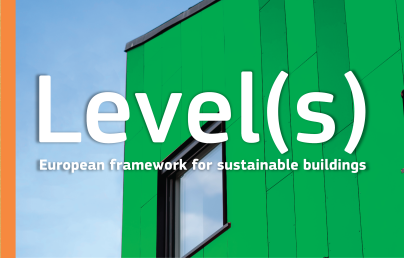Public and new buildings must lead the energy transition

Public and new buildings must lead the energy transition
Each EU country must ensure that at least 3% of the floor area of buildings owned by public bodies are renovated every year – including hospitals and schools, not just buildings owned and occupied by central government, write Jutta Paulus and Ciarán Cuffe.
Jutta Paulus is a German MEP from the Greens/EFA group in the European Parliament. Ciarán Cuffe is an Irish MEP also affiliated with the Greens/EFA.
The climate crisis demands that public authorities lead the energy transition in both policy and practice. The best place to start is in our immediate surroundings; we must deeply renovate and fully decarbonise the buildings in which we work and live every day.
To achieve this, the European legislative framework for sustainable buildings, notably, the Energy Performance of Buildings Directive (EPBD) and the Energy Efficiency Directive (EED) must work in harmony to enable deep renovation and new construction of a social and climate-friendly built environment.
Public authorities leading by example
The necessity and urgency of government leadership in this area is reflected in Article 6 of the Energy Efficiency Directive, which emphasises the exemplary role of public buildings. This article requires, inter alia, that each member state ensures that at least 3% of the floor area of buildings owned by public bodies are renovated every year up to nearly zero energy building (NZEB) standard.
In July 2021, the European Commission launched its recast proposal for a revised Energy Efficiency Directive (EED) within the “Fit for 55” package, which aims to reach at least 55% net greenhouse gas emissions reduction by 2030 in line with the European Green Deal.
This revision of the Energy Efficiency Directive presents a unique opportunity to further strengthen the energy efficiency policy framework and ensure that action on energy efficiency becomes a true priority.
That’s why we strongly support the European Commission’s proposals to widen the scope of Article 6 to not just include buildings owned and occupied by the central government, but other publicly owned buildings such as hospitals and schools.
We also welcome the proposed increase in ambition for renovation, from minimum requirements to the new Zero-Energy Building (ZEB) level, as defined by the Energy Performance of Buildings Directive.
We will work for developing a life-cycle approach to building materials in order to tackle the “grey” energy, which is used in their production. Using materials such as wood and nature-based insulation products would store CO2 previously drawn from the atmosphere by plants in the hull of a building – for decades or even centuries.
Under the revised EPBD, we will now be required to monitor the global warming potential of a building’s whole life cycle. This will demonstrate the building’s overall carbon emissions. This is an opportunity not to be missed for governments to lead the movement for climate-proofed buildings.
Read the full article here.


